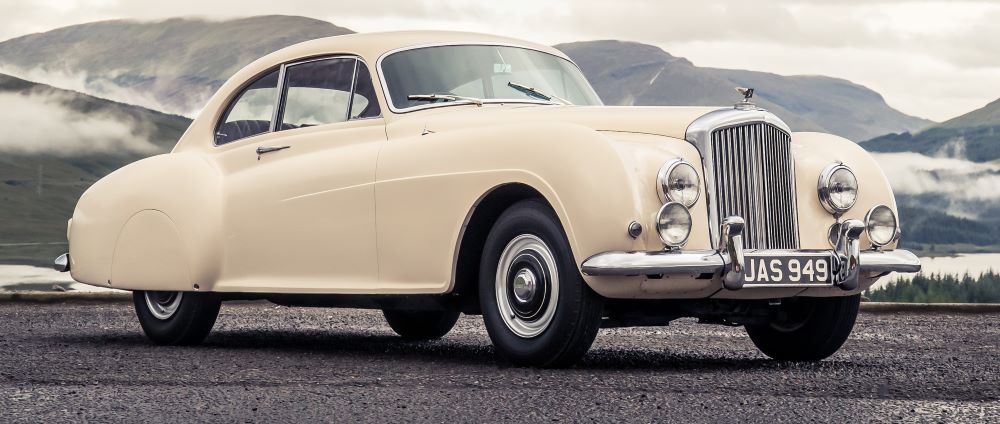
1953 Bentley R Type Continental
The R Type Continental
Two pre-war coachbuilt specials, the ‘Embiricos’ Bentley and Corniche, had shown the advantages of improved aerodynamics. In the early 1950s, Ivan Evernden took inspiration from these one-off creations to create a sleek coupé based on the R Type Bentley saloon. The power of the 4,566cc, six-cylinder in-line engine was raised from 140 to 153bhp, and the transmission featured a higher final drive ratio. The prototype – OLG 490, nicknamed Olga – averaged 118.75 mph over five laps (with a best lap of just under 120mph) at the banked Montlhèry track near Paris.
Engineering challenges
To keep down to the target weight, coachbuilders HJ Mulliner crafted the bodywork, window frames, windscreen surround, backlight, seat frames and bumpers in aluminium. Even at a pared-down weight, tyre choice was critical; no standard road tyre existed which could carry a two-ton car at speeds in excess of 115mph, and Dunlop Medium Distance Track tyres were specified.
The R-Type Continental in production
The first production model was delivered to its owner in June 1952 and by the time production ended in 1955, 208 R Type Continentals had been made. Of these, 193 were bodied by HJ Mulliner. Others included Park Ward (four dropheads and two coupés), Franay (five), Graber (three) and Farina (one).
JAS 949
R Type Continental chassis BC16C was built in 1953 and delivered to its first owner, Dr Rowland Guenin of Switzerland in December 1953. It was ordered in Ivory with Red interior and a manual gearbox, a specification it retains today along with the original 4.6-litre engine. Bentley Motors acquired JAS 949 in 2001 and has maintained it in excellent mechanical order while sympathetically preserving its patina.
| Produced | 1953 |
| Number Built | 208 |
| Body | Two-door, four-seat grand tourer made by HJ Mulliner in aluminium over a steel frame |
| Engine | 4566 cc 6-cylinder in-line with pushrod overhead inlet, side exhaust valve. Cast iron block, 7-bearing crankshaft, detachable aluminium cylinder head. Zenith downdraft carburettor |
| Power | 153 bhp (114 kW) @ 4,000 rpm |
| Transmission | Rear wheel drive, 4-speed close-ratio gearbox |
| Chassis | Steel channel section x-braced riveted frame. Independent front suspension with coil springs, wishbones and anti-roll bar. Rear suspension live axle with semi-elliptic leaf springs. Double-acting lever arm dampers; ride control on rear |
| Dimensions | Wheelbase 304.8 cm (120 in); length 524.51 cm (206.5 in); width 181.61 cm (71.5 in) Weight 1,700 kg (3,739 lb) |
| Performance | 115 mph. 0-62 mph 13.6 sec |

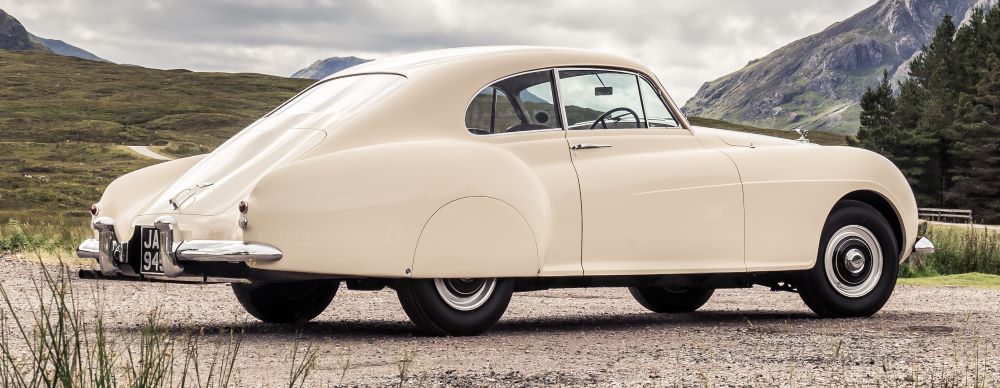
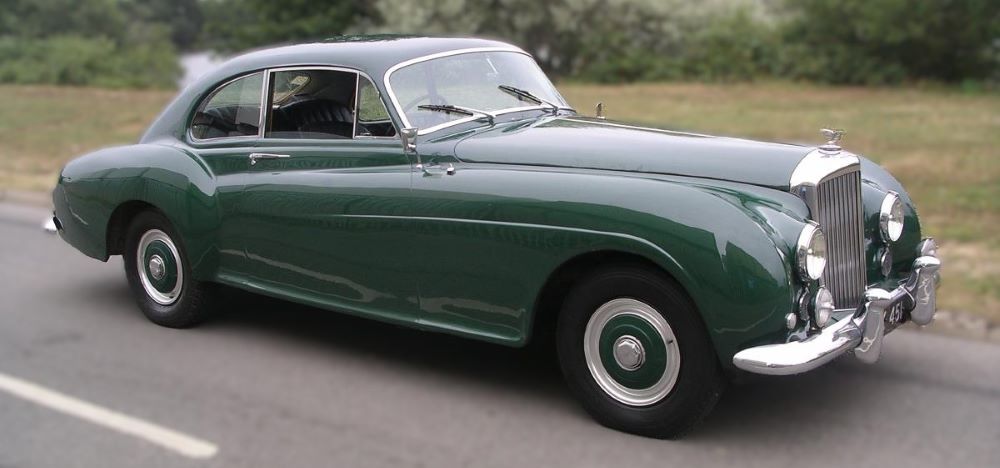
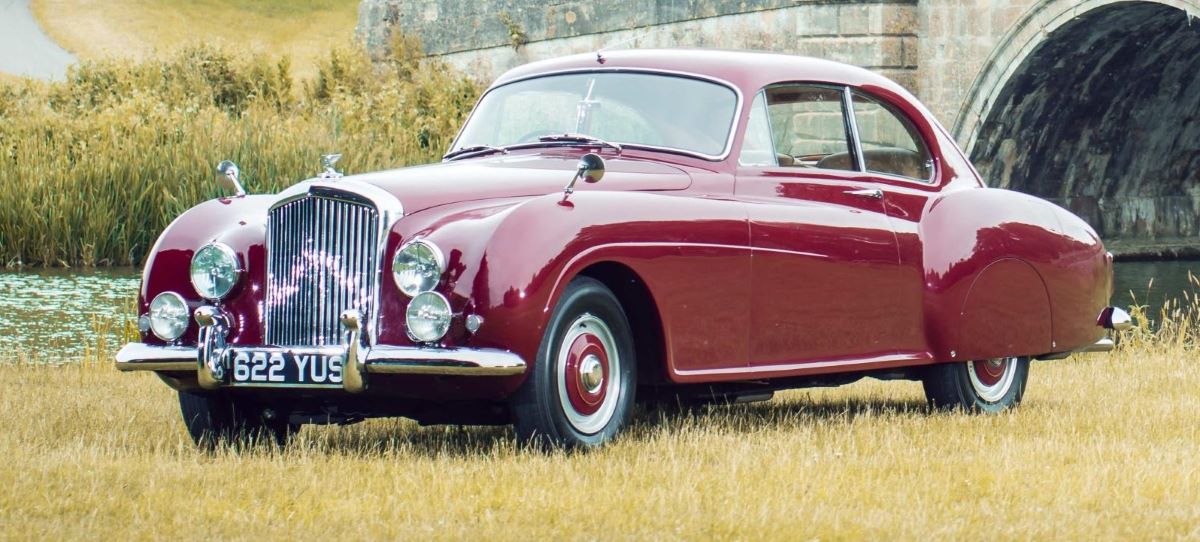
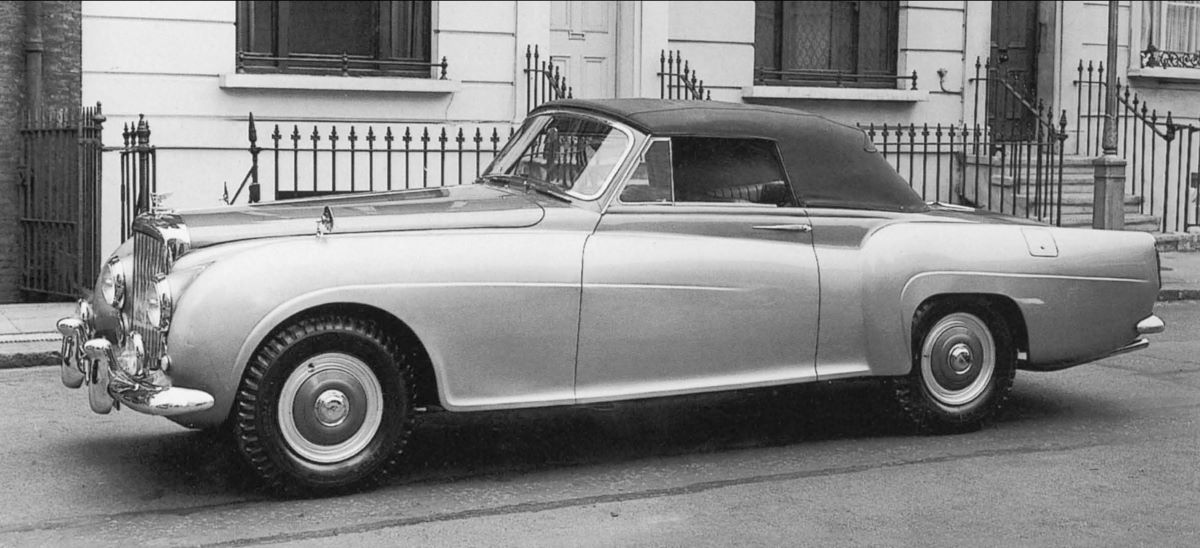
The car that James Bond “loved more than all the women at present in his life” will be among an array of stunning Bentleys exhibited at the Hampton Court Concours of Elegance this 5-7 September 2014.
The 1954 R-Type Continental Drophead Coupe is the car thought to have inspired author Ian Flemming to give his iconic British agent just such a model in his 1961 novel, Thunderball. Flemming, a keen petrolhead himself, is believed to have seen this Chapron coachbuilt Bentley in London while writing the novel, and subsequently had Bond taking his own fictional R-Type Continental coupe to H.J. Mulliner and converting it to “a convertible two-seater affair”.
The real-life car on display at Hampton Court was originally a Mulliner bodied fastback which was converted to a drophead coupe in 1956. Mulliner was approached at the time to perform the conversion but since the costs were deemed too high by its owner the project never progressed beyond the design phase, and French coachbuilder Henri Chapron was commissioned to carry out the work instead. Chapron’s final car didn’t fully resemble Mulliner’s elegant design work so the rear of the car was rebodied by a subsequent owner in 2005 to the original Mulliner specification, resulting in the stunning car on display.

You must be logged in to post a comment.